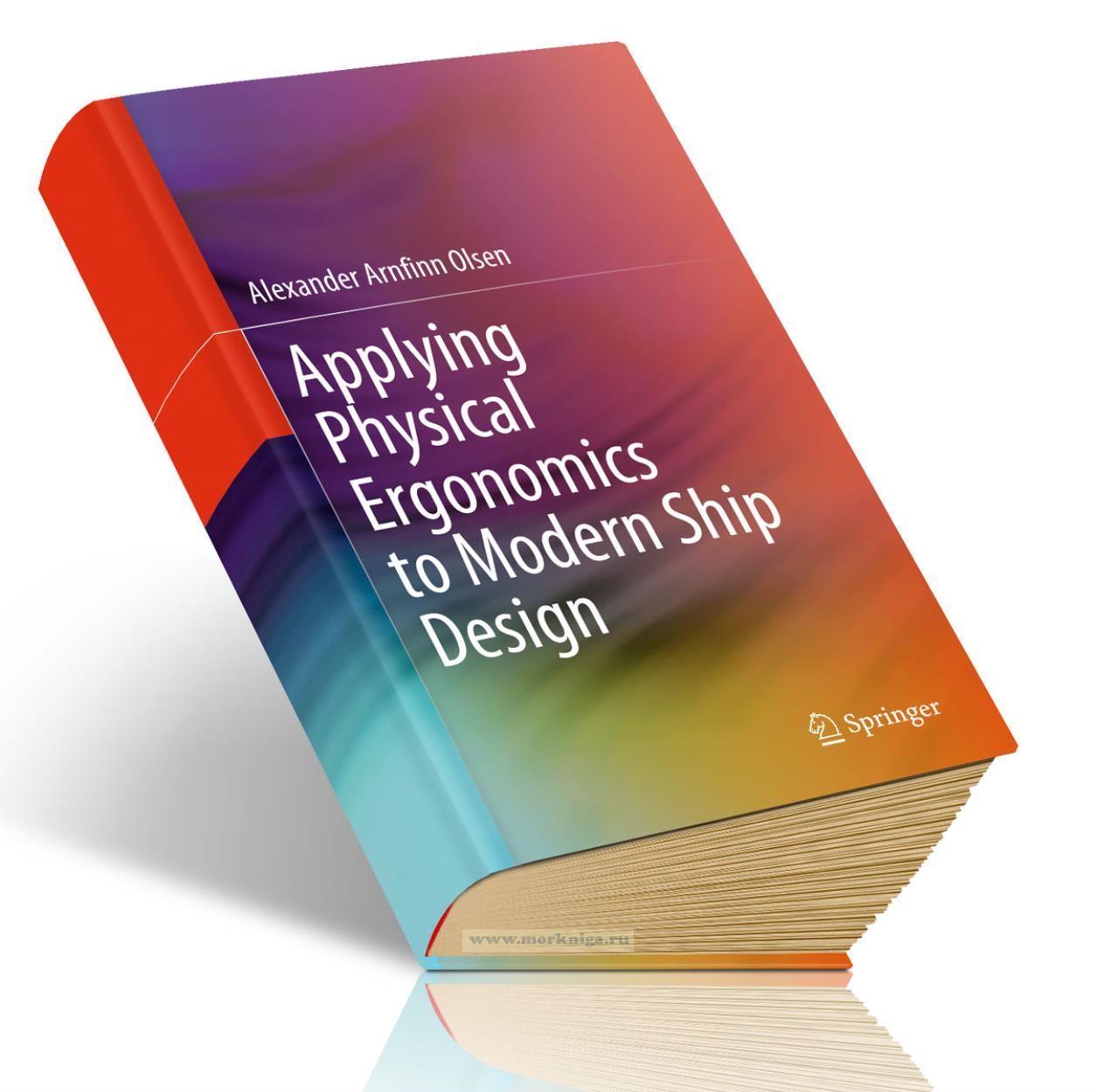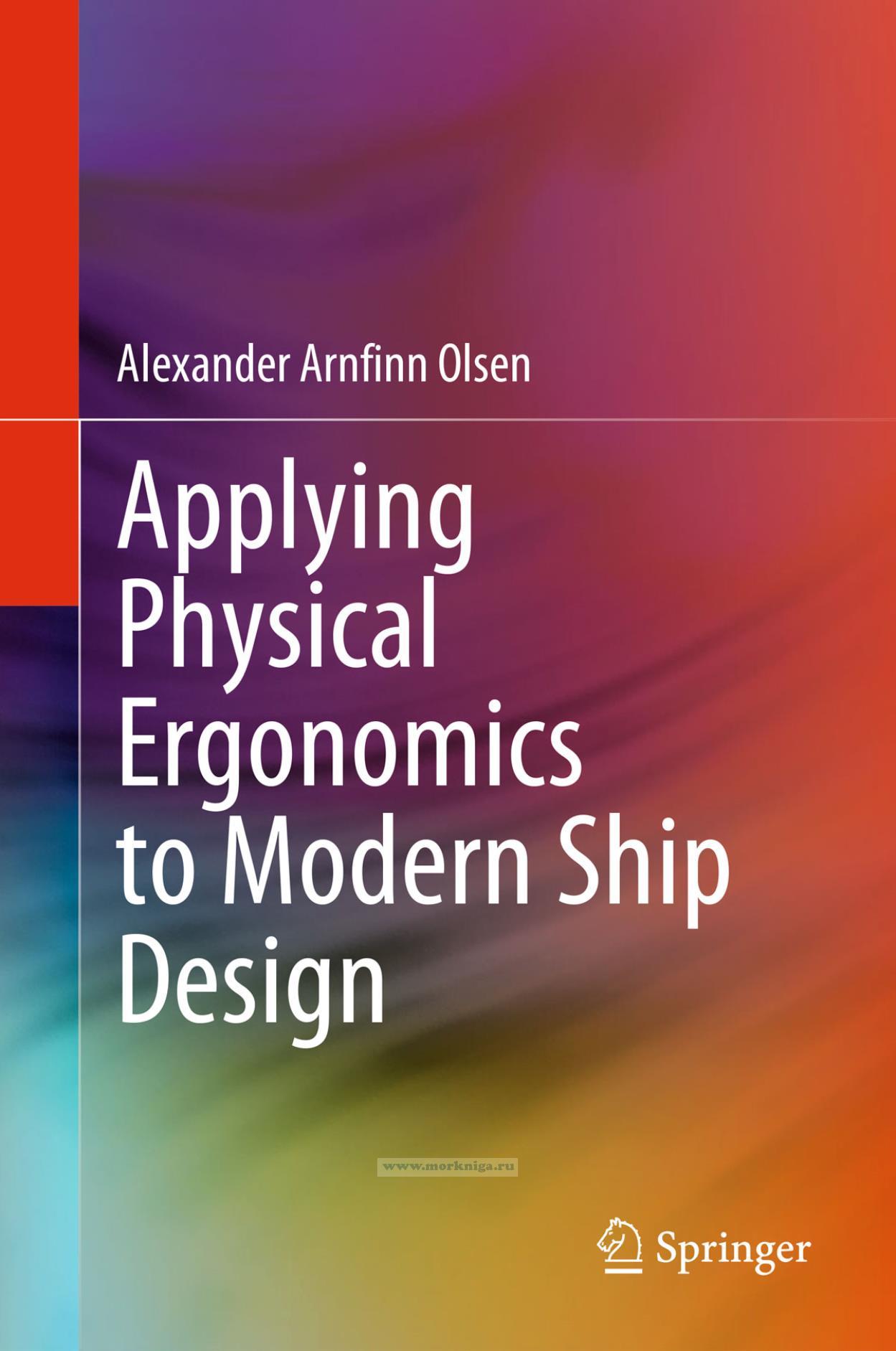Applying Physical Ergonomics to Modern Ship Design/–Я—А–Є–Љ–µ–љ–µ–љ–Є–µ —Д–Є–Ј–Є—З–µ—Б–Ї–Њ–є —Н—А–≥–Њ–љ–Њ–Љ–Є–Ї–Є –њ—А–Є –њ—А–Њ–µ–Ї—В–Є—А–Њ–≤–∞–љ–Є–Є —Б–Њ–≤—А–µ–Љ–µ–љ–љ—Л—Е —Б—Г–і–Њ–≤
–Ъ–љ–Є–≥–∞ –љ–∞ –∞–љ–≥–ї–Є–є—Б–Ї–Њ–Љ —П–Ј—Л–Ї–µ
This book combines and summarizes the myriad rules, regulations, guidance, and guidelines that pertain to the human factor element of vessel design and marine operations. With a focus on physical ergonomics, the book is thoroughly researched and draws on the most current Class rules and industry regulations promulgated by the IMO and other organizations. As such, this book serves as a single point of reference for professionals and students involved in human factors and ergonomics at sea.
Contents
Part I Introducing the Human Element and Ergonomics to the Maritime Environment
1 Introduction
The Human Elements that Enhance Safety at Sea
Scope of the Book
Structure of the Book
2 Controls
General
Principles
General Guidance
3 Displays
General
Principles
General Visual Display
Auditory Display
4 Alarms
General
Alarm Profiles
Audible Alarms
Alarm Requirements
5 Integration of Controls, Displays and Alarms
General
Principles
Position Relationship of Displays and Alarms
Position Relationship of Controls to Associated Displays and Alarms
Location of Alarms and Alarm Response Controls
Control and Display Movement Relationships
Grouping Relationships (Principles of Arrangement)
Grouping Segregation
Spatial Relationship of Controls and Displays to Equipment
General Console Arrangements
Specific Console Applications
6 Computer Workstation Design
General
Computer Workstation Design Principles
7 Manual Valve Operation, Access, Location and Orientation
General
Principles
Categorisation of Valves for Selection of Location
Preferred Valve Mounting Heights and Orientations
Alternative Valve Orientations
Valve Manifolds
8 Labelling, Signs and Graphics
General
Principles
Component Labels on Consoles and Panels
Equipment Identification Labels
Electrical System Labels
Sensor Labels
Room or Space Identification Labels
Pipe Marker Labels
Safe Working Load Identification Labels
Load Weight Identification Labels
Hazard Identification Signs
Information Signs or Placards
Instruction Labels
Graphical Schematics, Charts and Diagrams
Orientation Plans
Symbols
9 Stairs, Ladders, Ramps, Walkways, Platforms and Hatches
General
Principles
Stairs
Vertical Ladders
Inclined Ladders
Cargo Hold Stairs and Ladders
Guardrails and Climber Safety Devices
Fall Protection from Secondary Fall Points
Ladder and Access Handles
Walkways and Work Platforms
Ramps
Work Platforms
Hatches
Doors and Deck Scuttles
10 Maintenance and Considerations
General
Principles
Access Design
Labelling
Equipment Design
Equipment Handling
Tools
Safety
11 Materials Handling
General
Principles
Materials Handling Factors
Manual Materials Handling Planning Tools
Manual Materials Handling Planning
Materials Handling Planning for Assisted Lifts
12 Crew Habitability
General
Principles
Accommodations Spaces
Human Whole-Body Vibration
Noise
Indoor Climate
13 Anthropometric Design Principles and Dimensions
General
Principles
Anthropometric Data
Clothing and Postural Effects
Adapting Data for Various Populations
14 Application of Human Elements to Maritime Design
General
Objective of Integrating Human Elements and Ergonomics into Marine Engineering Design
Ergonomic Design Activities
Analysis of Ergonomic Design Requirements
Development of Human System Interface Designs
Ergonomics Verification and Validation
Integrating Ergonomic Principles, Criteria, and Processes
Part II Applying Human Elements and Ergonomics to the Maritime Environment
15 Navigational Bridge Layout and Arrangements
General
Operational Assumptions
Optional Class Notations
Regulations
Flag State Administration and National Authorities
Plans and Data to Be Submitted to Class
16 Requirements for Class Notations Relating to Bridge Layout
General
Equipment Design and Construction
Bridge Arrangement and Working Environment
Offshore Operations Bridge Visibility
Routes and Working Clearances
Tests and Sea Trials
17 Requirements for Class Notations Relating to Bridge Layout and Equipment
General
Documentation, Type Approval and Performance Standards of Navigational Equipment
Manual Mode of Operation
Alarm Systems
Computerised Equipment
Power Supply
Navigational Systems
Nautical Radio Communications Systems
Workstations (Required Equipment)
Operating/Technical Manuals
Tests and Sea Trials
18 Bridge Arrangements and Working Environment for Coastal
Offshore Vessels
General
Plans and Data to Be Submitted to Class
Navigation Bridge Design and Layout
Bridge Windows
Bridge Design and Configuration
Bridge Arrangements and Workstation Configurations
Bridge Equipment
Human Element
Vessel Survey Requirements
19 Requirements for Class Notations Relating to Integrated
Bridge Systems
General
Integrated Bridge Systems
Tests and Sea Trials
20 Ergonomic Bridge Design
General
Terminology
Principles of Ergonomic Design
21 Bridge Functionality
General
Terminology
Bridge Functions
22 Bridge Arrangement and Layout
General
Terminology
Internal Visibility
External Visibility
Overall Arrangement
Traffic
Sound Signals
23 Console and Workspace Design
General
Terminology
Configuration
Location of Instruments and Equipment
Communication Devices
24 Design of Displays, Controls and Information on the Bridge
General
Terminology
Display Arrangement
Information Display
Organisation of Visual Information
Display Design
Control Design
Control and Display Integration
Control and Display Failure Prevention
25 Design of Alarms and Warnings
General
Alarms
Alarm/Warning Transfer System
Alarms Concerning Navigation
Visual Alarms
Audible Alarms
26 Procedures, Codes and Aides Memoires
General
Terminology
Coding
Operating and Emergency Procedures
Labels, Placards and Job Performance Aids
27 Working Environment
General
Terminology
Vibration
Noise
Lighting
Device and Instrument Illumination
Heating, Ventilation and Air Conditioning
Bridge Watch Stander Maintenance
Personnel Safety on the Bridge
28 Bridge Facilities
General
Terminology
Bridge Facilities and Decor
29 Evaluating Bridge Design
General
Terminology
Navigation Bridge Ergonomic Design Processes
Part III Habitability in the Marine Environment
30 General Provisions
General
Terminology
Scope and Application
Class Notations
Data and Plans to Be Submitted to Class
Process for Obtaining a Class Notation
Initial Requirements
Surveys Completed After Construction
Alternatives
31 Accommodation Areas
General
Terminology
Accommodation Area Criteria
Accommodation Area Documentation
Submission Review and Verification
Results
32 Vibration
General
Terminology
Associated Documentation
Criteria
Test Plan
Test Requirements
Test Report
Evaluating Crew Exposure to Shock on High-Speed Craft
33 Noise
General
Terminology
Associated Documentation
Criteria
Test Plan
Test Requirements
Test Report
Results
34 Indoor Climate
General
Terminology
Associated Documentation
Criteria
Test Plan
Test Requirements
Test Report
Results
35 Lighting and Illumination
General
Terminology
Associated Documentation
Criteria
Test Plan
Test Requirements
Test Report
Results
36 Requirements for Class Recognised Test Specialists
General
Procedure for Approval and Certification
General Requirements
Certificate of Approval
Cancellation of Approval
Detailed Requirements by Ambient Environmental Aspect
Part IV Habitability on Workboats
37 General Provisions for Workboats
General
Terminology
Scope and Application
Class Notations
Plans and Data to Be Submitted to Class
Process for Obtaining a Class Notation
Initial Requirements
Surveys Completed After Construction
Alternatives
38 Accommodation Areas on Workboats
General
Terminology
Accommodation Area Criteria
Accommodation Area Documentation
Submission Review and Verification
Results
39 Vibration on Workboats
General
Terminology
Associated Documentation
Criteria
Test Plan
Test Requirements
Test Report
Results
40 Noise on Workboats
General
Terminology
Associated Documentation
Criteria
Test Plan
Test Requirements
Test Report
Results
41 Indoor Climate on Workboats
General
Terminology
Associated Documentation
Criteria
Test Requirements
Test Report
Results
42 Lighting and Illumination on Workboats
General
Terminology
Associated Documentation
Criteria
Test Plan
Test Requirements
Test Report
Results
Part V Habitability on Offshore Installations
43 General Provisions for Offshore Installations
General
Terminology
Class Notations
Plans and Data to be Submitted to Class
Process for Obtaining a Class Notation
Initial Requirements
Surveys Completed After Construction
Alternatives
44 Accommodation Areas on Offshore Installations
General
Terminology
Associated Documentation
Personnel Accommodation Area Criteria
Accommodation Area Documentation
Submission Review and Verification
Results
45 Vibration on Offshore Installations
General
Terminology
Associated Documentation
Criteria
Test Plan
Test Requirements
46 Noise on Offshore Installations
General
Terminology
Associated Documentation
Criteria
Acoustic Insulation
Test Plan
Test Requirements
Test Report
Results
47 Indoor Climate on Offshore Installations
General
Terminology
Associated Documentation
Criteria
Test Plan
Test Requirements
Test Report
Results
48 Lighting and Illumination on Offshore Installations
General
Terminology
Associated Documentation
Criteria
Test Plan
Test Requirements
Test Report
Results
Part VI Living and Working in Low Temperature Marine Environments
49 Weather Conditions of Interest
General
Ice Types
Air Temperature
Humidity
White Outs, Blizzards and Fog
Hours of Darkness
50 Crew Safety in Low Temperature Marine Environments
General
Deck Recommendations
Vessel Systems and Machinery Recommendations
Safety Systems
51 Crew Welfare in Low Temperature Marine Environments
General
Terminology
Human Response to Cold and Arctic Exposure
52 Crew Training for Low Temperature Conditions
General
Training
Documentation
Annex 1
Annex 2
Annex 3
Glossary
References

